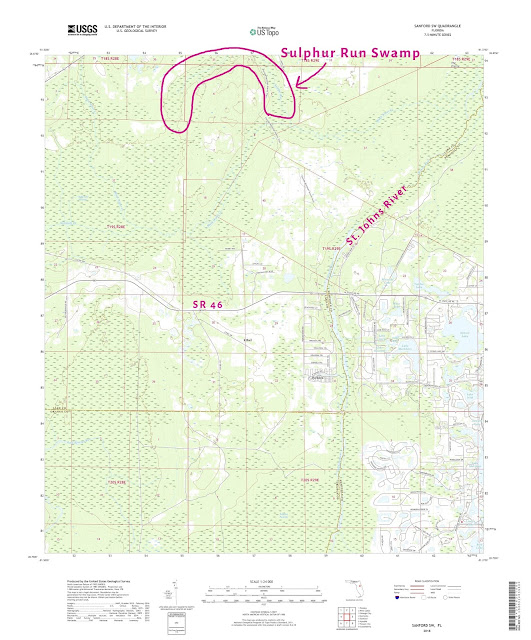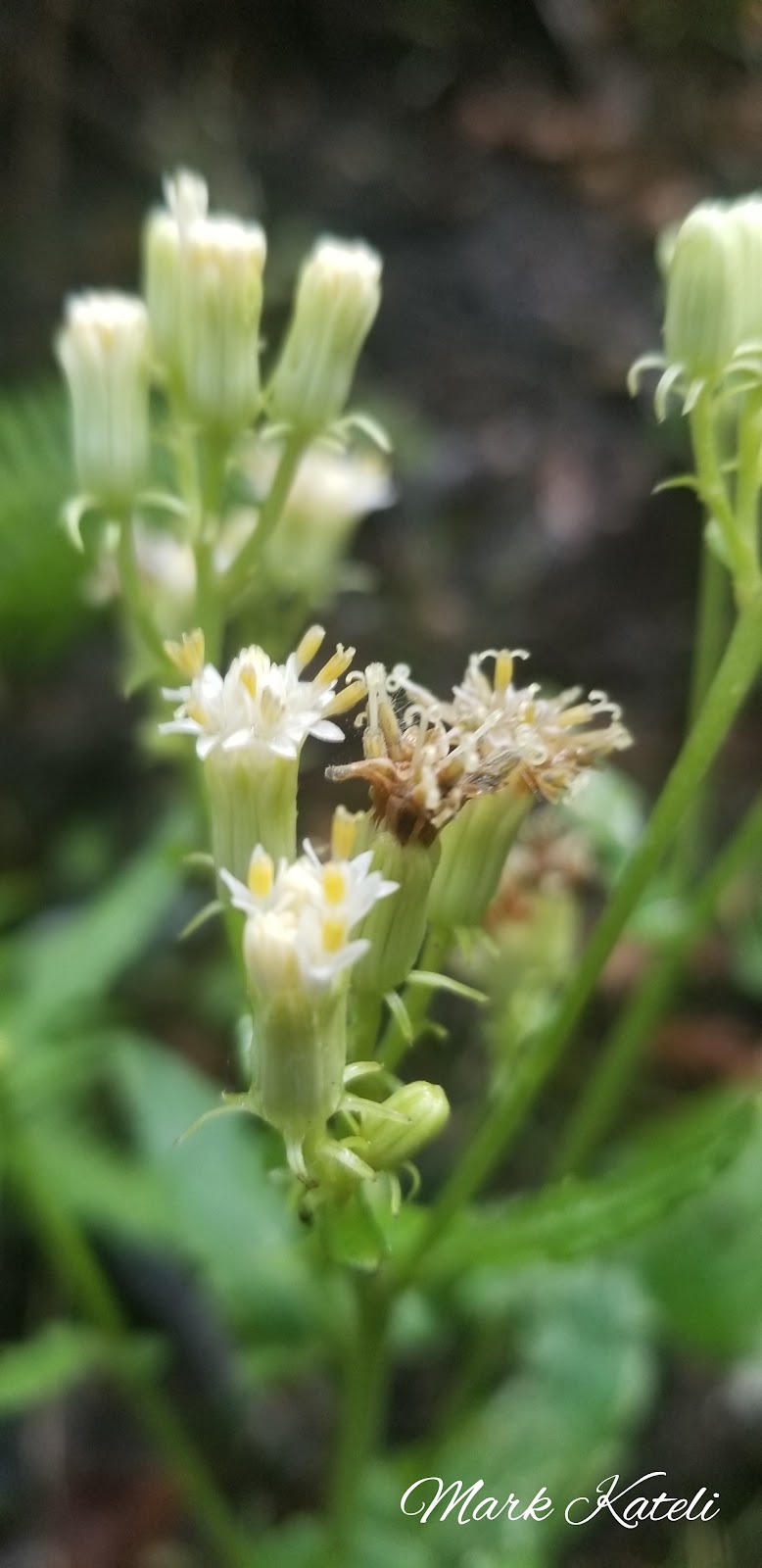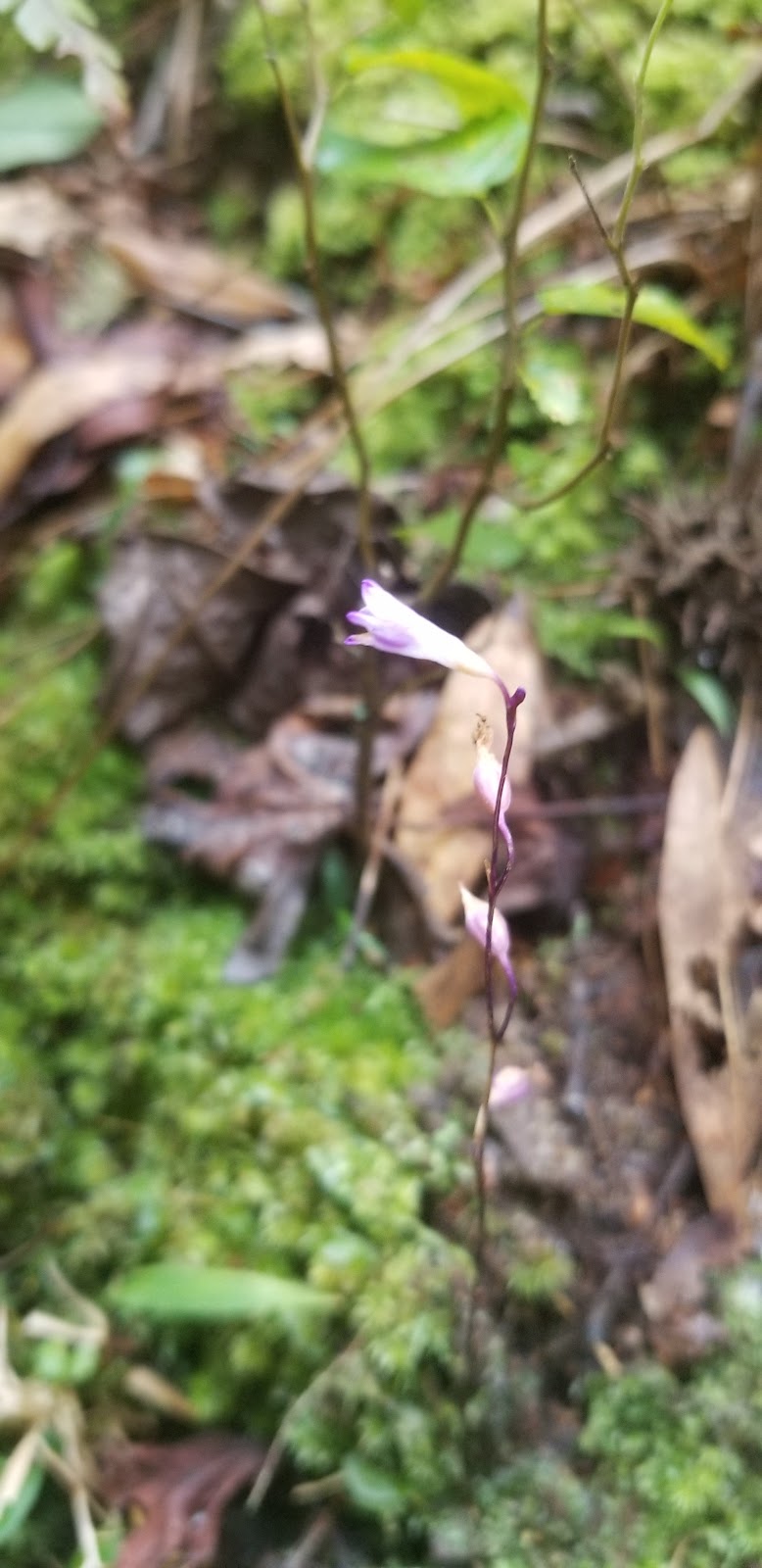All photos, video, and article by Mark Kateli,
Cuplet Fern Chapter President
This event occurred in September 2019 in Sulphur Run Swamp, a tributary of the St. Johns River in the Seminole State Forest. An accompanying video of this memorable experience can be found here:
https://youtu.be/9P3nVCJoNYQ
Hammockherb or Gulf Hammock Indian Plantain,
Hasteola robertiorum, is a facultative wetland plant that prefers to grow in dappled sun within swamp forest. To date, it is only found in two counties in Florida: Lake and Levy, and is listed as state-endangered
[1]. The closely related false Indian plantain,
Hasteola suaveolens, does not occur in Florida but has a wider distribution across several northern states where it also listed as endangered due to habitat loss and invasive plant competition
[2].
There are a number of differences and similarities between species. Both Hasteola species flower in late summer to early fall but differ in the number of disc flowers present per inflorescence. Hammockherb has 10-14 while false Indian plantain has 18-55
[3]. There is a slight flower color difference with the former being greenish-white and the latter white. Both species differ from Indian plantains (
Arnoglossum spp.) by their leaf shape as well as the number of flowers they have (Indian plantains have around 5 flowers per head).
 |
| Annotated USGS Topo Quad, Sanford SW |
Geographic and habitat distances have relegated Hammockherb into a few isolated pockets. The only representative of this genus in Florida, the largest current population of Hammockherb occurs within Seminole State Forest. But until this event, a population count had never been done- likely due to a combination of lack of funding, limited work hours devoted to a niche project like this by state employees, the conditions in which this plant prefers to grow, and the number of people required to conduct a decent population count within Sulphur Run Swamp. In many ways, I felt this was an excellent opportunity with the Florida Forest Service to broaden the horizons of what Florida Native Plant Society (FNPS) is capable of.
 |
| FNPS member Susan Angermeier |
 |
| FNPS member and artist Kate Dolamore |
 |
| FNPS member and Cuplet Fern Chapter President and article author Mark Kateli. Mark's jeans were blue before the count. |
 |
|
FNPS member Rory Trumbore |
Over eighteen attendees overwhelmingly from science backgrounds (biology, botany, environmental science, and the like) engaged in this activity- knowing well the sweltering conditions that awaited them. The publicity for the event explicitly mentioned that it was not for the faint of heart. The turnout, remarkably, was unaffected by such cautionary emails. The spectrum of attendees ranged from students earning course service hours to employees with the Florida Department of Environmental Protection (DEP) to retired public school science teachers. Each found the idea of the event personally appealing in their own way. We split off into four groups- each leader with a tally sheet to record individual plants and also note if they were in a flower/fruit phase. A small piece of biodegradable red paper tape was placed near each to avoid double counting.
 |
| Hammockherb, Hasteola robertiorium, our target species |
Beauty is in the eye of the beholder. The plant, at first glance, is no stunner. A perennial non-woody species (hence the common name, herb), it had erect stems that were 2-4’ tall. The hastate (spear-shaped with pointed lobes at the base) leaves had serrate margins with long petioles that were occasionally winged. The fruit is a cypsela (an achene-like fruit produced by some members of the Asteraceae family) though I didn’t get to see one. As for the ‘sweet-smell’ that Hasteola is known for, it wasn’t readily discernible. It certainly wasn’t fetid. My mind was engrossed with the thought that I might be slowly sinking.
 |
| Juvenile plants with varied leaves occasionally appearing hastate and/or with winged petioles. Mature plants exhibited the same. |
And for good reason. In some areas, the muck was knee-deep and sucked my rain boots right off. Fallen logs provided little to no reprieve as they cracked at the weight of anyone who tried to seek a better path. To make things more interesting, the afternoon brought patchy rain. We stood under the shade of trees not knowing when the rain would abate. Thankfully, it did and all of us made it out unscathed by lunchtime. Some of us decided to stay afterwards while others left. We counted over 42 individual plants- a first in the history of Sulphur Run Swamp.
 |
| Muck covered shows, a sign of our solidarity. | | |
 |
| Red Chokeberry (Aronia arbutifolia), a member of the rose family, found along the swamp edge. |
 |
| Nodding Nixie (Apteria aphylla),
a diminutive wildflower in the Bluethread Family (Burmanniaceae) found
in several wetland areas around the state. Nodding Nixie, the
purple-flowered plant, is a mycohetertroph which has species around the
world but is limited to the geological southeastern coastal plain here
in the United States. |
Overall, the property was very diverse. Some of us went to see a large terrestrial orchid patch after the count but what really intrigued me was red chokeberry (
Aronia arbutifolia) which we encountered on our way out of the muck. I had never seen one. Part of the larger Rosaceae family, it was interesting to spot it right along the ecotone between swamp and wet prairie. When you are a plant enthusiast, you tend to gravitate towards species that you’ve never seen before- no matter if it’s common or not.
For most FNPS members, this type of event on a difficulty scale of 1-10, would be a 9 with several people needing assistance from getting stuck in muck. Even so it was, by far, an exciting experience for all. I would like to express my deep gratitude to the helpfulness and collaboration of the Florida Forest Service team without whom this memory would not be possible.
Sources (all accessed on December 23, 2019):
[1] University of South Florida Plant Atlas.
https://florida.plantatlas.usf.edu/Plant.aspx?id=1210
[2] Minnesota wildflowers: A field guide to Minnesota flora.
https://www.minnesotawildflowers.info/flower/sweet-smelling-indian-plantain
[3] Florida Natural Areas Inventory (FNAI) field guide publications https://www.fnai.org/FieldGuide/pdf/Hasteola_robertiorum.pdf








Comments